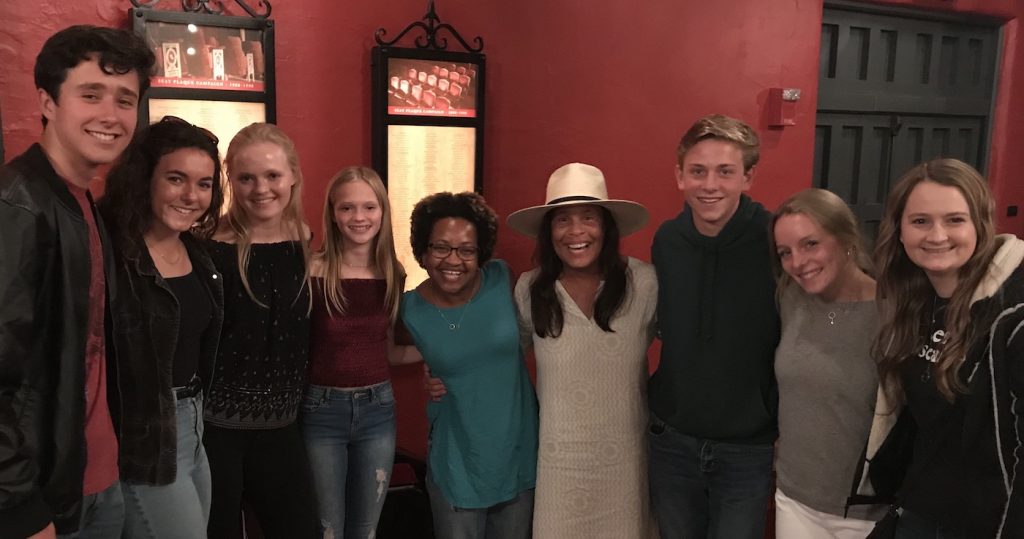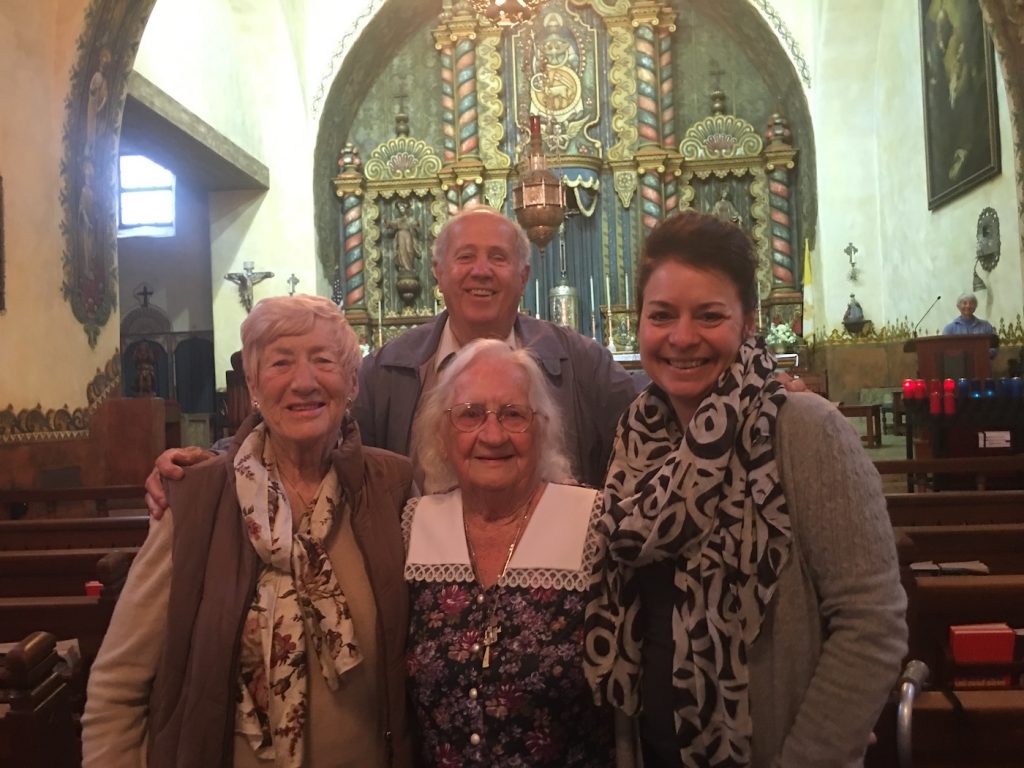Help with Insurance Claims
Sometimes it takes a village. That point was well demonstrated three weeks ago, when dozens of Montecito residents – mostly strangers to each other – gathered at a community roundtable to share what they’d learned so far from the Thomas Fire and Debris Flow insurance claim experience.
There was some initial trepidation the group might dissolve into a “sob session,” but instead each Montecito participant took a more global high road, sharing their most useful personal tips toward successfully traveling on the insurance claims path. What emerged was a broad-range of ideas, shortcuts, and unique ways for non-professional homeowners to steer along what can be the unfamiliar and sometimes complex insurance-claim track.
One important outcome of this meeting was the realization that Montecito might, in the future, have a stronger rebuilding effort if we speak to the insurance industry as a community, with a unified and strong voice. Our neighbors in Santa Rosa have found a good measure of success in that kind of community unity. One Montecito resident even suggested that locals boycott insurance providers who don’t fully and diligently respond to our damaged neighbors in a timely and fair manner!
With an eye toward community unity, efficiency, and education, a second citizen-insurance “Shared Experience” roundtable will be convened on Wednesday, June 13, at 4 until 5:30 pm at Montecito Hall (library building), 1469 East Valley Road. Come to listen and/or to share. Anyone who has filed a Thomas Fire or Debris Flow insurance claim is welcome. In addition to community members’ tips and tales, we will welcome some local professional experts to hear from their viewpoint as our neighbors what they think are the best tips toward a successful insurance claims experience.
In the spirit of community, here are some of the best tips garnered from the May “Shared-Experience” Insurance Roundtable. The tips are not ranked, as their usefulness may depend on where you are in the claims process:
• Don’t be reluctant to file a claim because you feel you might be denying other Montecito community members access to coverage. According to Investopedia.com, the insurance companies appear to have plenty of funds on hand. Here are some of the net annual premiums for the largest insurance companies: State Farm $50.8 billion; AllState $24.8 billion; Berkshire Hathaway (Geico) $21 billion; Farmers $14 billion.
• In a very non-scientific poll, roundtable participants ranked their insurance companies one to 10, on their response to date. Chubb came in near 10, while AllState ranked the lowest, below the mid-range mark. Most of those participating in the mini-survey were soot-cinder-and ash claimants, who are nearing the six-month mark on their claim.
• Neighbors using a public adjuster were pleased with the experience. Public adjusters are professional insurance negotiators and they take a percentage of the claim, usually 10 percent. In exchange, they do all the filing, estimates, and negotiations, which, given some of the time-consuming complexities, seemed, to those going that route, as a reasonable cost for the relief. Several community members named Greenspan as a popular provider (greenspani.com.) At the time the roundtable met, it was believed Greenspan only accepted claims over $1 million dollar – however, the Los Angeles Greenspan office indicates they may now considering smaller claim clients.)
• Repeated often by the group: Keep written documentation of all correspondence with your insurance company claims adjuster. Some companies are inclined to prefer telephone conversations and agreements are sometime indicated in those conversations. Following those telephone calls, ask your adjuster to send it in writing and write your own notes of those conversations and email them to your claim file. You may find this exercise useful later, by being able to refer to the date and time, if you find yourself saying, “…but he/she promised me…” and there is no known record or recollection of the conversation.
• Lean on your agent; while not in the claims department, sometimes they are able to draw some attention to your claim.
• Get a written copy of your full policy now, even if you have no damages. The annual Declaration Page may not be enough to explain your full rights, and it may be hard to produce your policy after you file a claim. You’ve heard this before, this time, your neighbors urge, don’t procrastinate; go get it. If you file a claim, your adjuster will refer to it often.
• The “United Policy Holders Overriding Rules” states insurance companies must act with “Good Faith (belief and trust), Diligence, and Dispatch.” Don’t let your insurance company, instead, veer toward “Delays, Deferrals, and Disputes.” If you feel an unreasonable delay and your adjuster is not meeting your needs, ask to escalate your concerns to your claim adjuster’s superior. Your neighbors agreed: a good partnership with your adjuster might facilitate your claim. Find one you work well with, but be aware – they are all nice – until they are not.
• A daily diary may help you track what could be a long process.
• If possible, avoid disputes, which may add to delays; keep the claim in play and be sure the work is progressing daily.
There were many more helpful tips, so join us to fill your insurance claims knowledge basket. Our next community “shared experience” insurance roundtable will be June 13 at 4 pm, Montecito Library Hall. In the insurance-claims realm, a day at the beach can quickly turn to quicksand… but, through our shared-experience, your village and your neighbors may have a lifeline to throw you.
For more info, contact J’Amy Brown, community advocate; ash and soot insurance claimant: (805) 969-5515
J’Amy Brown
Montecito
R E S P E C T
I was informed of your recent editor’s note by six of your readers. I am deeply honored to have earned your respect, and I will strive to continue to deserve your appreciation.
Joyce Dudley
Santa Barbara
(Editor’s note: Ms Dudley refers to the following that appeared at the end of a letter from Larry Bond [“Revered to Reviled,” MJ #24/22]: “It’s just been our policy over these past 23 years(!) that we don’t get involved in endorsing law enforcement races, preferring to leave those positions in the hands of those in law enforcement. Regardless, we don’t see any need to change out Sheriff Brown for someone else, as he has acted with dignity and resolve throughout the past four years. Ditto for Joyce Dudley.”
We thank her for taking the time, out of what has to be a very busy schedule, to pass this on to us. – J.B.)
A Star Is Born

Thank you again for coming to support Maile in Les Misérables and for your kind words in the Journal. Janet Adderley mentioned that you may be doing a follow-up story, and I wasn’t sure if you already had some pictures, so included some.
Holly Merrick
Summerland
(Editor’s note: Full disclosure: Maile Kai Merrick is my wife’s niece. Having written that, I can also attest that 11-year-old Maile has a commanding voice and a compelling stage presence. She is a fourth-generation performer, going back to her great-grandmother on her mother’s side and has obviously inherited the singing-acting gene. We’re told Maile is likely to be scheduled to sing “God Bless America” or “Firework” solo at the upcoming Boys and Girls Club Gala on July 14. And, she’s certain to nab a big role in next year’s Santa Barbara Youth Ensemble Theater production of West Side Story. Can starring in Funny Girl be far off? Eat your heart out, Barbra Streisand! – J.B.)
Thank You, Santa Barbara
Our first Enjolras (Trevor Hurvitz), both Madame Thenardiers (Connie Connaughton and Sydney Edgecomb), Little Cosette (Lily Blankenhorn ) – and for many years Sbyet’s premier leading couple, Grace Blankenhorn and Frankie Neiman, who played Marius and Eponine in our 2014 production. They, along with 10 other SBYET (Youth Ensemble Theatre) alum from the last 13 years of fostering artistic excellence and spreading joy throughout Santa Barbara and beyond, joined us in song and celebration of Lauren Cantin and her fellow Les Misérables cast members: kids who sang for Oprah, won Santa Barbara Teen Star, toured with Andrea Bocelli… promising young actors who delighted Rob Lowe and brought Ivan Reitman to tears.

After a glorious and surreal weekend that included four sold-out houses and a performance with Katy Perry at the Santa Barbara Bowl, these amazing alums all joined us onstage during the curtain call to sing the last stanza of “Do You Hear The People Sing”, in honor of their time in SBYET. My grand-baby Amelia from Austin was even on hand to witness it all, and the cast was composed of the best and the brightest talent from all three of my schools in Austin, Santa Barbara, and Pacific Palisades.
At a point when my life is transitioning in ways that make it harder and harder to sustain this extraordinary platform for kids in Santa Barbara, when I even started to question SBYET’s relevancy and level of community support for its mission, this miraculous weekend happened. Our largest audiences ever in our 13-year history, the triumphant debuts of a new generation of talent (including James Buckley‘s astonishing grand-niece Maile), Katy Perry’s seal of approval, and a reunion with 21 amazing alums and their parents…
So, as Valjean says, “There is power in me yet, my race is not yet won.” And as beautiful Julia Riskin says, “Janet, my mom would be so proud”… Here’s to the next 10 years! Thank you, Santa Barbara, for now my life is blessed.
Janet Adderley
Santa Barbara

Happy Birthday, Evelyn!
Evelyn Duimovich turned 96 years old on May 30. Evelyn has been a fixture at Our Lady of Mount Carmel Church for decades. She attends Mass every day.
Don Gragg
Santa Barbara

Drinking the California Kool-Aid
In the 1920s and ’30s, organized street gangs collected “protection” money from businesses seeking to avoid smashed windows or broken knees.
In January 2009, President Obama began his “Investment in Peace” policy by throwing hundreds of millions of dollars at the Sudan-Darfur-North African political corruption-starvation crisis. This dangerously naive attempt to pay and appease dictators to not withhold donated food and medicine would have made Neville Chamberlain proud.
The president repeated his same technique in 2016. Iran assured everyone that American hostages would not be killed and promised to not commit any crimes with nuclear weapons. The cost (extortion) of this fiasco was $150 billion, with an additional $1.7 billion delivered in pallets of cold hard cash – euros, U.S. dollars, British pounds – under cover of media darkness.
Obama’s international examples have inspired the City of Oakland to begin paying street criminals as young as 14 years of age $15,000 per year for not committing violent crimes. Nationwide, gangs are now perfecting this “buying the peace” concept.
Community “protection-plans” are being enacted in America’s Bellwether (sheep) State, starting with Sacramento and Stockton. Under contract with the Advance Peace Organization, youthful offenders can earn up to $18,000 if they promise not to kill anyone for a whole year.
Our government currently pays farmers for not growing crops, so it makes sense to give people money for not doing bad things. Other possibilities that could be morphed into these “pot-o-gold” solutions might include having state forestry, environmental agencies, and insurance companies offer $25,000 per year to suspected arsonists for not setting fires and the TSA could offer potential hijackers $100,000 for every aircraft they promise to not destroy.
The Treasury Department, HHS, and banks could offer a 10-percent “incentive” to individuals for not counterfeiting money or food stamps. Seasoned criminals and aspiring apprentices about to print fake $20s could confidentially contact the Secret Service. Once classified as “reformed currency manipulator” (RCM) or Ameliorated Armed Bank Withdrawal Suspect (AABWS), these folks could be given a new identity, access to free yoga classes, and receive a daily self-esteem-boosting phone call.
The Department of Defense could fork over a few bucks to help struggling terrorist and amateur bomb makers learn a new skill but only if they swear to refrain from strapping explosives to their children or each other. Promissory agreements should not be over-restrictive, impugn one’s religious beliefs, or imply bad parenting. By offering “pre-detonation bonuses” ($100,000) the world would be rendered safe… mostly.
Financial opportunities should be available to everyone, including pimps who do not rent out their hookers, alcoholics who do not drive after or while drinking, teenagers who swear they will not become addicted to video games or heroin, litterbugs who promise to not dump trash on the highways, and husbands who take an oath to never beat their wives… again.
Former smokers could get $35,000 annually for not thinking about tobacco. Tax-evaders, corrupt stock brokers, candy-junkies, and couch potatoes would get a similar amount for signing a simple agreement to avoid insider trading, walk 100 yards each week, and surrender their donuts. The financial savings for the health care system, insurance companies, hospitals, emergency rooms, and federal prisons would be incredible.
Finally, let’s reward our children with $100 per week if they make a pinkie-promise to never burn down the house, break the neighbor’s windows, steal cookies, or become a playground bully. Everybody wins.
The Stockton and Sacramento’s “pot-o-gold” programs certainly have a potential for abuse by terrorists, tax-evaders, pre-criminals, gang members, chocoholics, and satirical pundits, but if it makes everyone feel good, isn’t it worth it?
Cautiously searching for unicorns and magic dust,
Dale Lowdermilk
Santa Barbara
(Editor’s note: Dear Mr. Lowdermilk, I am sorry to point out how naive you are. Vermont Senator Bernie Sanders is already three steps ahead of you and the City of Oakland. Mr. Sanders’s brilliant economic plan to give every U.S. resident $15,000 a year for doing… nothing, will be way more successful than finding a unicorn and/or magic dust. Being paid to play video games or sit around picking one’s nose while watching daytime dramas is way more appealing, and one need not promise not to do something one is inclined to do. It’s a win-win. – J.B.)
USA Quiz
In terms of population, a random listing of the 10 largest cities in California appears below. Your task is to identify each city from the word list provided, given that:
a) the words in each list contain only letters in the city name;
b) each letter in the city name appears at least once in the word list.
1) (and, look)
2) (cob, hand, leg)
3) (ham, mine)
4) (ant, sat)
5) (fore, son)
6) (and, do, siege)
7) (gone, seal)
8) (jean, so)
9) (coin, scarf)
10) (comets, ran)
Sanderson Smith
Carpinteria
(Editor’s note: Answers will appear in next week’s issue)







You must be logged in to post a comment.